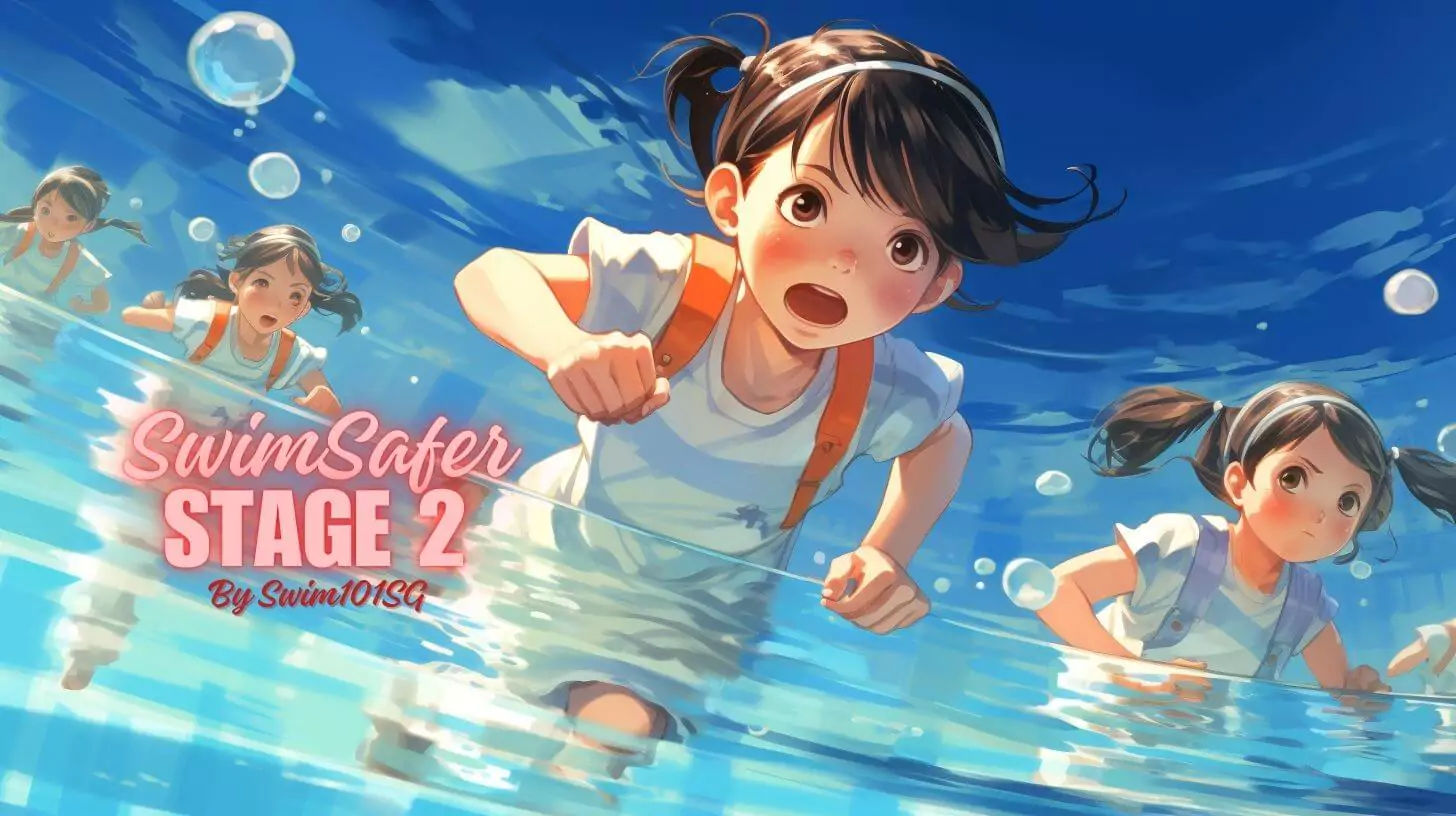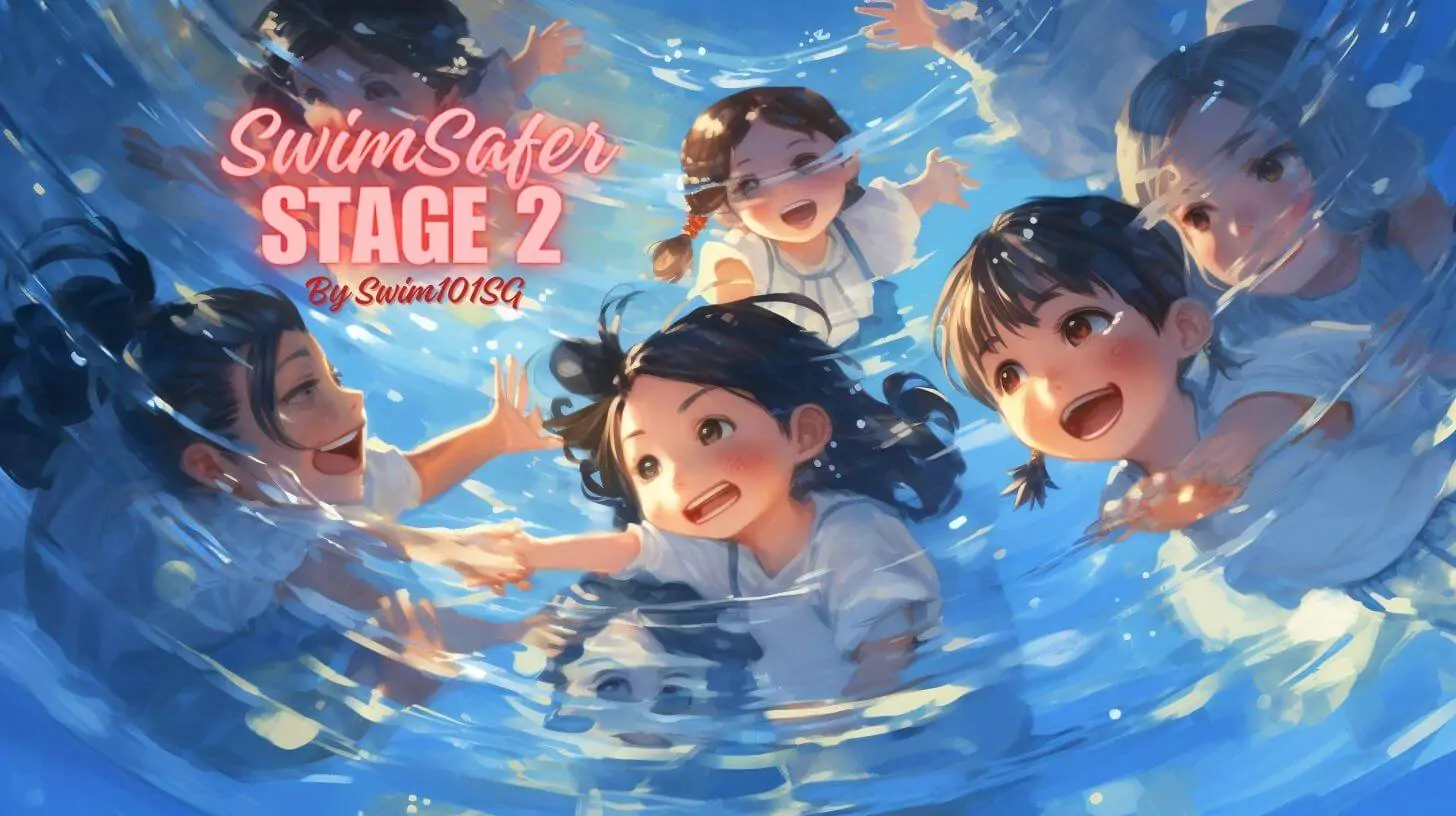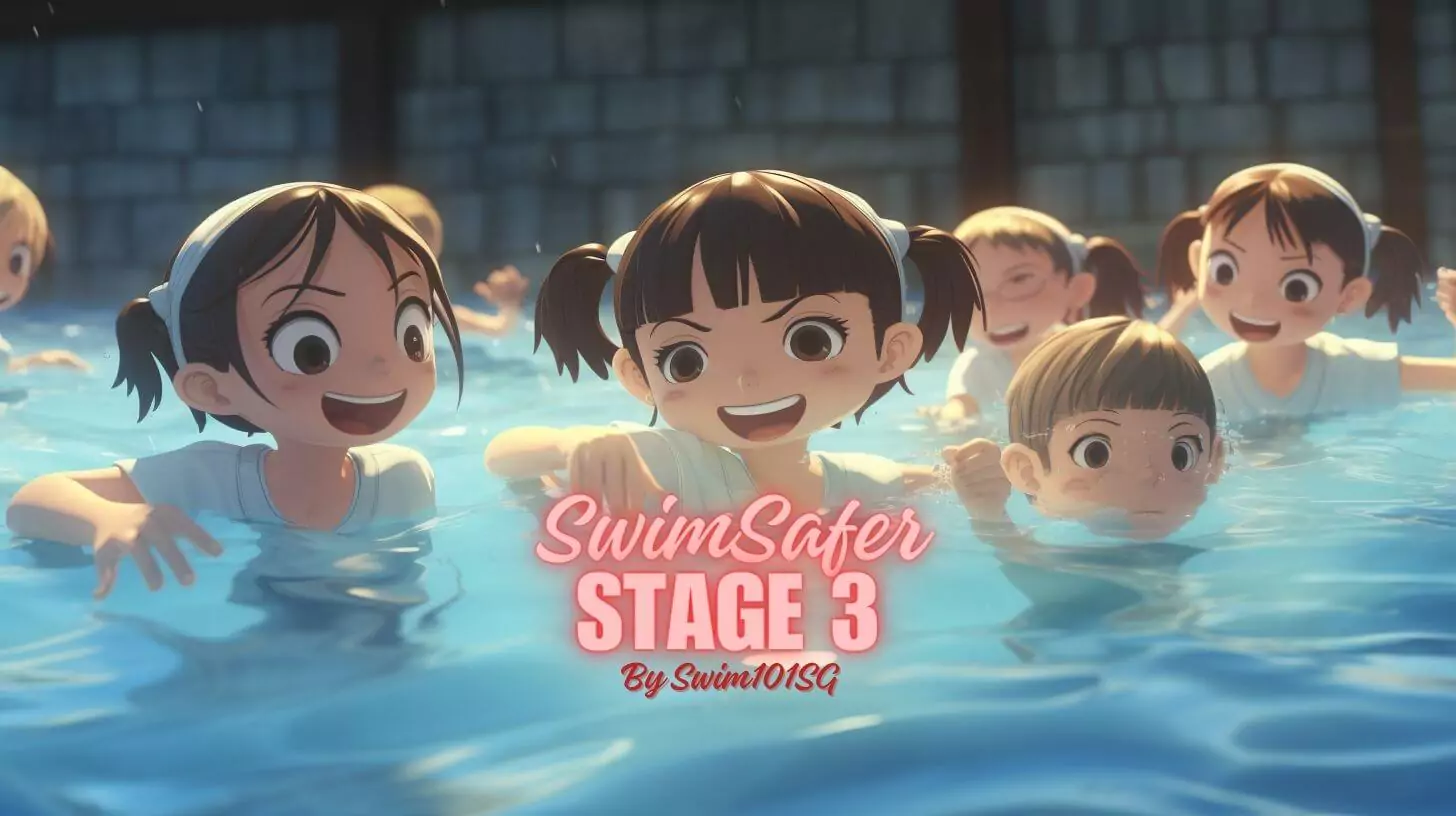Introduction to SwimSafer Stage 2
Diving into the world of swimming can seem daunting, especially when you’re just starting. Did you know that Singapore’s SwimSafer Stage 2 program is specifically designed to build on your basic water skills and enhance your confidence? In this comprehensive guide, we’ll walk you through everything you need to know about Stage 2 SwimSafer —from vital survival techniques to executing perfect surface dives.
Let’s dive in and make waves together!
Key Takeaways
- Stage 2 is designed to help beginners build on their basic water skills and gain confidence in swimming.
- The program teaches important survival techniques such as safe entries and exits, sculling, underwater skills, and water safety knowledge.
- The test criteria for SwimSafer Stage 2 include demonstrating proficiency in fundamental water skills, underwater skills, survival skills, and the use of personal flotation devices.
- Developing water skills and confidence through Stage 2 SwimSafer promotes safety, and independence, and prepares participants for more advanced swimming techniques.
Fundamental Water Skills Taught in SwimSafer 2.0 Stage 2

SwimSafer Stage 2 teaches fundamental water skills such as entries and exits, sculling and body orientation, underwater skills, survival and activity skills, and water safety knowledge.
Entries & Exits
In Stage 2 requirements, kids learn safe ways to enter and exit the pool. One way they get in is by a step-in entry. They also put on a personal flotation device (PFD). Then, they jump into water that’s at least 1.4 meters deep.
These skills help them know how to be safe when swimming.
Sculling & Body Orientation
Sculling is a big part of Stage 2. It is all about moving your hands in the water to stay up. You learn to move them back and forth, side to side. This helps you float on top of the water.
The way you place your body also matters. Body orientation teaches you how to turn and position yourself in the water safely. For example, you may have to swim belly down or go feet first into the water during surface dives.
These skills get tested too as part of SwimSafer stage 2 test criteria.
Underwater Skills
Kids learn new things about underwater skills. They find out how to hold their breath underwater. Diving safely is also taught. To do this, they use a move called the feet-first surface dive.
They must go into the water that is at least 1.4m deep and come back up again. After this, they need to swim for 15 meters using any survival stroke. Another cool skill learned in this stage is how to look for and get an object from chest-deep water.
Survival & Activity Skills
In stage 2 swimming requirements, you learn key survival skills. You must float, scull, and tread water for half a minute. It’s all about staying safe in the water! To show they have learned well, students swim 15 meters with any survival stroke.
They also need to handle a personal flotation device (PFD). This means putting it on and jumping into deep water that is at least 1.4 meters deep! More than just doing activities in the water, kids get useful knowledge too.
They learn about safety rules, how to know what is around them in nature, health tips, how to act when there is danger and ways to save others from harm.
Water Safety Knowledge
Here you learn important information about water safety. Here, kids gain skills in spotting hazards. They also know what to do in an emergency. The program teaches how to stay safe and healthy around water bodies.
It explains the survival techniques when in danger. Kids will become aware of their environment as well. By wearing a personal flotation device (PFD), they can jump into deep water safely.
SwimSafer Stage 2 Test Criteria

In SwimSafer Stage 2, the test criteria are broken down into different skill sets, in which the students are expected to demonstrate proficiency. These include a range of fundamental water skills, underwater skills, survival skills, and even the ability to use personal flotation devices.
| Test Criteria | Description |
|---|---|
| Step-in Entry | The first step in the test is to demonstrate a step-in entry into the water. |
| Sculling & Body Orientation Skills | Students must show their ability to scull and orient their bodies in water, an essential skill for maintaining balance and control. |
| Underwater Skills | Students are evaluated on their underwater skills, including front and back float techniques. |
| Movement/Swimming/Strokes | Students should be able to swim on their front and back using different strokes and movements, covering a distance of at least 25 meters. |
| Survival Skills | Survival skills such as sculling, floating, and treading water for 30 seconds are part of the test criteria, along with the demonstration of a 15-meter swim using any survival stroke. |
| Personal Flotation Device (PFD) | Apart from swimming skills, students are also tested on their ability to put on a PFD and jump into water that is at least 1.4 meters deep. |
Achieving these skills not only offers students a sense of accomplishment but also ensures they have the necessary skills for safety and survival in water.
Importance of Developing Water Skills and Confidence
Developing water skills and confidence is crucial for safety, independence, and preparing for more advanced swimming techniques.
Safety in and around water
Being safe in and around water is a must. SwimSafer Stage 2 gives lessons on this. It tells kids how to spot risks at the pool or beach. Kids also learn what to do if they see someone in trouble in the water.
They know not to jump in but to get help right away. This stage makes sure kids know how to keep safe while having fun with water play.
Increased independence and confidence
By developing fundamental water skills and gaining confidence in the water, participants in swimming stage 2 can experience increased independence and confidence. Achieving milestones such as swimming 25 meters continuously and performing essential survival skills like sculling and floating contribute to this growth.
The ability to swim using any survival stroke for 15 meters further enhances their independence. Through these achievements, students become more self-assured in their abilities, allowing them to navigate water environments with greater ease and preparing them for more advanced swimming techniques.
Preparing for more advanced swimming techniques
In Stage 2 SwimSafer, participants not only develop essential water skills and confidence but also prepare for more advanced swimming techniques. This stage focuses on building a strong foundation by improving general skills and knowledge acquired in Stage 1.
Participants will learn how to swim at least 25 meters continuously, which is an important step toward mastering different swimming strokes. They will also be encouraged to achieve this distance using feet-first surface dives.
By developing their swimming proficiency in Stage 2, individuals of all ages and abilities can progress towards more advanced techniques while staying safe in and around the water.
Conclusion
What is stage 2 swimming?
Stage 2 swimming refers to a swimming level typically offered in swim schools. It focuses on building water confidence, introducing basic strokes like front crawl and backstroke, and improving fundamental skills such as floating and kicking. Participants are usually children who have completed Stage 1 or have basic swimming abilities.
In conclusion, Swim Safer Stage 2 is an important program for developing fundamental water skills and confidence. It provides participants with essential knowledge to stay safe in and around water while also building their independence and confidence.
With the skills learned in Stage 2, participants will be better prepared for more advanced swimming techniques in the future.










